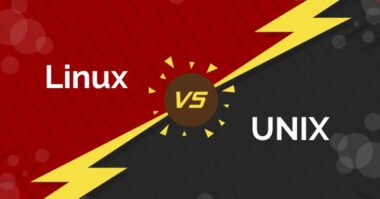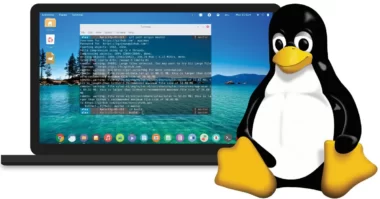SEO Services

What Is Fedora Server and How Does It Stand Out in the Linux World?
Fedora Server stands out in the Linux world for several reasons. Firstly, it is known for its enhanced security measures, ensuring that your server is well-protected against threats. Secondly, Fedora Server is designed for high performance, allowing you to handle demanding workloads…

What Is SELinux and How to Configure It on Fedora Server
SELinux is a powerful security framework for your Fedora server. It enforces strict policies to protect against potential threats. Learn how to enable and configure SELinux to safeguard your server like never before. Key Takeaways SELinux is a mandatory access control mechanism…

What Is Fedora OS and Its Unique Place in the Linux EcOSystem
Fedora OS is a unique and innovative Linux distribution. It offers a distinct set of features and contributions, making it stand out in the Linux ecosystem. Fedora OS is known for its cutting-edge technology and commitment to open-source development. It is sponsored…

How to Get Started With Linux: a Beginner’s Guide
A beginner’s guide is a comprehensive resource that provides step-by-step instructions and essential information to help inexperienced individuals learn and understand a particular subject or skill. In the context of this article, a beginner’s guide is designed to assist curious computer users…

What Is Linux and Why Is It so Popular?
Linux is a free and open-source operating system known for its stability, security, and flexibility. It is widely popular due to its ability to cater to the diverse needs of tech companies like Google, Facebook, and Amazon. Linux provides a robust foundation…

Why Linux Is the Preferred OS for Developers and Programmers
Linux is the preferred operating system for developers and programmers due to its open-source nature, extensive customization options, and command-line interface. It offers a vast array of programming tools and libraries, creating a seamless environment for coding, debugging, and testing. With its…

How to Choose the Right Linux Distribution for Your Needs
A Linux distribution is a version of the Linux operating system that includes the Linux kernel along with a collection of software and applications. It is designed to meet the needs and preferences of different users, offering a range of features, desktop…

What Is Linux Kernel Update and How Does It Work?
A Linux kernel update refers to the process of upgrading the core component of the Linux operating system. It involves installing a newer version of the kernel, which is responsible for managing the system’s resources and enabling communication between hardware and software….

Why Linux Offers Better Security Compared to Other OS
Linux offers better security compared to other operating systems due to several factors. Firstly, it provides user control and permissions, allowing users to define and manage access to files and resources. This feature helps in preventing unauthorized access and potential security breaches….

How to Set Up a Linux Server for Small Businesses
A Linux server is a powerful computer running the Linux operating system that serves as the backbone of a small business, providing stability and efficiency. It is the central hub that manages and coordinates various operations, allowing businesses to streamline their processes…

What Is the Difference Between Linux and Unix?
The main difference between Linux and Unix is that Linux is an open-source operating system, while Unix is a proprietary operating system. Linux is freely available and can be modified by anyone, while Unix requires a license and is controlled by specific…

How to Use Linux Command Line: Tips and Tricks
Linux command line refers to the text-based interface in a Linux operating system that allows users to interact with their computer by entering commands. It provides a powerful and efficient way to perform various tasks, such as navigating the file system, managing…

Troubleshooting Common Linux Issues: A Practical Guide
Linux troubleshooting is the process of identifying and resolving common issues that can occur in a Linux operating system. This includes problems with software installation, network connectivity, and other system-related errors. By understanding and applying troubleshooting techniques, users can effectively diagnose and…

Exploring the Best Open Source Projects on Linux
The best open source projects on Linux refer to the top software projects available for the Linux operating system that are developed and distributed under open source licenses. These projects cover a wide range of categories, including media players, office suites, graphic…

The Evolution of Linux: From a Hobby to an Industry Standard
Linux is an open-source operating system that was initially developed as a hobby project but has now become an industry standard. It has a fascinating history of innovation, collaboration, and perseverance, overcoming challenges to become a powerful OS used by millions worldwide….

Customizing Your Linux Desktop for Maximum Productivity
Customizing your Linux desktop for maximum productivity refers to the process of personalizing and optimizing the appearance, functionality, and workflow of your Linux operating system to improve efficiency and make tasks easier to complete. This can involve customizing the desktop environment, choosing…

How to Integrate Linux With Windows and Macos Environments
Integrating Linux with Windows and MacOS environments refers to the process of seamlessly incorporating the Linux operating system into existing Windows or MacOS setups. This can be achieved through techniques such as: Dual booting Virtualization Cross-platform file sharing Remote desktop solutions Using…

Basics of Linux File Systems and Their Management
A Linux file system refers to the structure and organization of files and directories in a Linux operating system. It determines how data is stored, accessed, and managed on storage devices such as hard drives. Linux file systems provide a hierarchical structure,…

What Is Linux Shell Scripting and How Does It Work?
Linux shell scripting is a method of automating tasks and executing commands in the Linux operating system. It involves writing scripts or programs that utilize the shell, which is the command-line interface of the operating system. These scripts can be used to…
Linux
